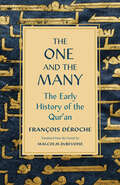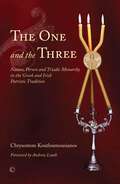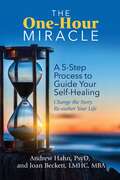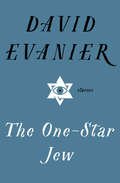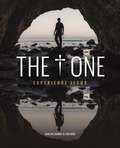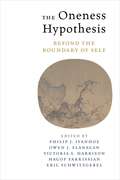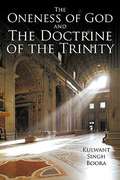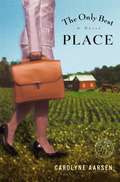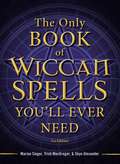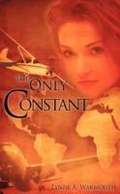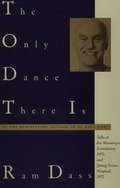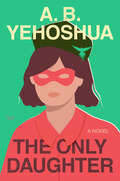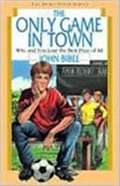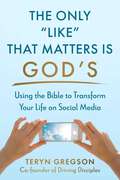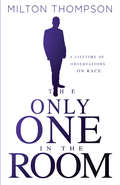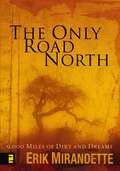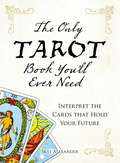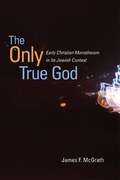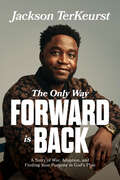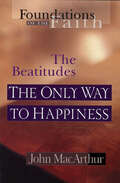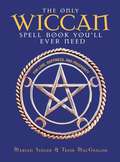- Table View
- List View
The One and the Many: The Early History of the Qur'an
by Francois DerocheA revelatory account of early Islam’s great diversity by the world’s leading scholar of early Qur’anic manuscripts“There is no one better placed than François Déroche to write the history—and tell the story—of how the Quran went from words uttered by Muhammad to inviolable canonical scripture. This is a meticulous, lucid, and fascinating book.”—Shawkat Toorawa, Yale University According to Muslim dogma, the recited and written text of the Qur’an as we know it today scrupulously reflects the divine word as it was originally sent down to Muhammad. An examination of early Islamic sources, including accounts of prophetic sayings, all of them compared with the oldest Qur’anic manuscripts, reveal that plurality was in fact the outstanding characteristic of the genesis and transmission of the Qur’an, both textually and orally. By piecing together information about alternative wordings eliminated from the canonical version that gradually came to be imposed during the first centuries of Islam, François Déroche shows that the Qur’an long remained open to textual diversity. Not only did the faithful initially adopt a flexible attitude toward the Qur’anic text, an attitude strikingly at odds with the absolute literalism later enforced by Muslim orthodoxy, but Muhammad himself turns out to have been more concerned with the meaning than the letter of the divine message.
The One and the Three: Nature, Person and Triadic Monarchy in the Greek and Irish Patristic Tradition
by Chrysostom KoutloumousianosThe One and the Three explores parallels between Byzantine and early Irish monastic traditions, finding in both a markedly trinitarian theology founded on God's contemplation and ascetic experience. Chrysostom Koutloumousianos refutes modern theological theses that affect ecclesiology, and contrasts current schools of theological thought with patristic theology and anthropology, in order to approach the meaning and reality of unity and otherness within the Triadic Monad and the cosmos. He explores such topics as the connection between nature and person, the esoteric dimension of the Self, the relation and dialectic of impersonal institutions and personal charisma, and perennial monastic virtues as ways to unity in diversity.
The One-Hour Miracle: A 5-Step Process to Guide Your Self-Healing: Change the Story, Re-author Your Life
by Andrew Hahn Joan BeckettA revolutionary healing framework that is a blueprint for transforming most problems, ranging from the most pedestrian to the most treatment resistant. And sometimes, the transformation simply takes one hour.The One-Hour Miracle: A 5-Step Process to Guide Your Self-Healing presents the revolutionary Life-Centered Therapy (LCT), a healing framework that is a blueprint for transforming most problems--physical (such as chronic pain, asthma, addictions), emtional and mental (including depresssion, PTSD, OCD, paranoia) relational (releasing destructive patterns), and spiritual (alienation, despair, inertia), And sometimes, the transformation simply takes one hour. Filled with testimonials of real-life people who have benefitted from this approach when other attempts to end their suffering turned up fruitless, it provides people with an entirely new way of understanding their suffering, giving them inspiration and hope that they can create miracles in their lives. The One-Hour Miracle includes a protocol that allows people to facilitate this process on their own by finding the root cause of their suffering and shifting it. This framework helps them live engaged lives of freedom, peace, joy, wisdom, and vitality. In the book, co-authors Andrew Hahn, PsyD, and Joan Beckett, LMHC, will teach readers how to do this work for themselves and others. With step-by-step instructions, readers are led through a five-step process, an integration of mindfulness and body-centered therapy, that guides them through their own self-healing practices and how to do them. In addition, therapists who are reading the book will have enough information to immediately start using the approach with clients without needing more training
The One-Star Jew: Stories
by David EvanierSignature David Evanier—a story collection so wickedly funny and painfully honest you won&’t know whether to laugh, cry, or curl up in a ball and moan with delightNew York writer Bruce Orav is crumbling. Every time his father speaks—&“I thought there was a chance you&’d have a bestseller sometime. I guess that&’s dead, huh?&”—Bruce loses another piece of himself. The same thing happens at the Jewish philanthropic organization where he earns a steady, if not exactly generous, paycheck and is regularly subjected to the musings of Luther, his cynical coworker: &“My experience has always been that kids are cannibals and killers.&” Not even the weekly volunteer visits he and his wife, Susan, make to an elderly Jewish woman&’s home give Bruce the chance to stitch himself back together again—every trip is marred by another wildly inappropriate and combative scene between the quarrelsome eighty-four-year-old and her African American caretakers.With nowhere safe to turn, what is Bruce to do? His therapist wants him to join a dating club, but there is only one real answer: Keep living, because the future—fingers crossed—is almost guaranteed to be better than the past. And, just as important, keep laughing. Thankfully, David Evanier is here to make the laughter part as easy as reading The One-Star Jew.
The One: Experience Jesus
by Gary Clarke Judah Smith Charlotte Gambill Carlos Darby Carl LentzWe are living in a world increasingly geared toward visual learners. With the explosion of sites like Instagram and Pinterest, it is evident that the way we consume content is changing before our eyes. Developed for the avid consumer of visual content, The One uses The Voice Bible translation alongside powerful, full-color images to maximize the long-term impact for the reader, creating a dynamic way to engage with and experience the scriptures. <P><P> The One takes you on an exciting journey to uncover who Jesus really is. Understand the true nature of Jesus, His character, why He came, what He accomplished, and what it means to your day-to-day life. Discover your true value in Him, and experience a transformed life based on a genuine daily relationship with a Savior who brings hope and purpose to all who seek Him. Features include: Articles and interviews with world-renowned preachersReal life stories on the transforming power of JesusResources for personal reflection and growth In-depth group study discussion questions
The Oneness Hypothesis: Beyond the Boundary of Self
by Stephen R. Clark Michael R. Slater Mark Unno Jay L. Garfield Lawrence Blum Tao Jiang Justin Tiwald Victoria Harrison Eva Feder Kittay Donald L. Baxter Bradford Cokelet Kendy M. Hess Cho Geung Ho Shaun Nichols Dimitri Putilin Nina Strohminger William B. Swann Jr. Sanaz TalaifarThe idea that the self is inextricably intertwined with the rest of the world—the “oneness hypothesis”—can be found in many of the world’s philosophical and religious traditions. Oneness provides ways to imagine and achieve a more expansive conception of the self as fundamentally connected with other people, creatures, and things. Such views present profound challenges to Western hyperindividualism and its excessive concern with self-interest and tendency toward self-centered behavior.This anthology presents a wide-ranging, interdisciplinary exploration of the nature and implications of the oneness hypothesis. While fundamentally inspired by East and South Asian traditions, in which such a view is often critical to their philosophical approach, this collection also draws upon religious studies, psychology, and Western philosophy, as well as sociology, evolutionary theory, and cognitive neuroscience. Contributors trace the oneness hypothesis through the works of East Asian and Western schools, including Confucianism, Mohism, Daoism, Buddhism, and Platonism and such thinkers as Zhuangzi, Kant, James, and Dewey. They intervene in debates over ethics, cultural difference, identity, group solidarity, and the positive and negative implications of metaphors of organic unity. Challenging dominant views that presume that the proper scope of the mind stops at the boundaries of skin and skull, The Oneness Hypothesis shows that a more relational conception of the self is not only consistent with contemporary science but has the potential to lead to greater happiness and well-being for both individuals and the larger wholes of which they are parts.
The Oneness of God and the Doctrine of the Trinity
by Kulwant Singh BooraThe teaching that God is one was paramount in Old Testament theology, since the introduction of the New Testament the concept of one God continued and was expanded by and through Jesus in Second Temple Monotheism. With this in mind, the Bible does not teach the concept of the Trinitarian doctrine. The Apostles, including the New Testament Church, were pure monotheistic and oneness believers knowing and understanding that God is one and not one substance and three persons. Therefore, this book has addressed a variety of issues and provided a body of literature and authority supporting the position that God is numerically one and that the Trinitarian doctrine is a human construct and product that is unscriptural and unbiblical, which evolved over the centuries being fueled by man made creeds and ideologies. It is not surprising then that even Trinitarians struggle to define the Trinitarian doctrine suggesting it is a mystical revelation, when in fact, others have argued that it is incomprehensible.
The Only Best Place
by Carolyne AarsenLeslie Vandekeere thought her big-city career made her life worthwhile, but a move to small-town Montana shows her how big the world really is. Leslie Vandekeere had a good life: a happy family, a great career (even if it did pull her away from home), and all the energy of urban living. But she finds herself miles away from the city she knows and loves when her husband moves her and the kids back to his boyhood home in Montana to help his mother work the struggling family farm. Being a farmer's wife was definitely not in Leslie's plan, and now she finds herself dealing with dirty cows, giant machinery, eccentric neighbors, and an extended family she doesn't quite fit into. When her husband hints that the move might be permanent, Leslie must decide. Can she really handle this much fresh air?
The Only Book of Wiccan Spells You'll Ever Need
by Trish Macgregor Skye Alexander Marian SingerMaster the fundamentals of spellcraft Written by noted Wiccan authorities Marian Singer, Trish MacGregor, and Skye Alexander, this collection of spells is perfect for understanding the basics of Wiccan philosophy and ideology. Starting with a brief rundown of Witchcraft tools and symbols, this book helps you create spells for virtually every aspect of your life. This new edition includes essential information on: The Wheel of the Year: the eight major holidays (or sabbats) in the Witches' calendar Keeping a grimoire or Book of Shadows Meditation, visualization, and manifestation Magickal correspondences and properties of stones Spirit animals and totems How to join or create a coven Filled with more than 100 Wiccan spells that have simple instructions, this book contains everything you need to know in order to create spells that work.
The Only Book of Wiccan Spells You'll Ever Need
by Trish Macgregor Marian SingerMaster the fundamentals of spellcraft Written by noted Wiccan authorities Marian Singer, Trish MacGregor, and Skye Alexander, this collection of spells is perfect for understanding the basics of Wiccan philosophy and ideology. Starting with a brief rundown of Witchcraft tools and symbols, this book helps you create spells for virtually every aspect of your life. This new edition includes essential information on: The Wheel of the Year: the eight major holidays (or sabbats) in the Witches' calendar Keeping a grimoire or Book of Shadows Meditation, visualization, and manifestation Magickal correspondences and properties of stones Spirit animals and totems How to join or create a coven Filled with more than 100 Wiccan spells that have simple instructions, this book contains everything you need to know in order to create spells that work.
The Only Book of Wiccan Spells You'll Ever Need
by Trish Macgregor Marian SingerMaster the fundamentals of spellcraftWritten by noted Wiccan authorities Marian Singer, Trish MacGregor, and Skye Alexander, this collection of spells is perfect for understanding the basics of Wiccan philosophy and ideology. Starting with a brief rundown of Witchcraft tools and symbols, this book helps you create spells for virtually every aspect of your life. This new edition includes essential information on:The Wheel of the Year: the eight major holidays (or sabbats) in the Witches' calendarKeeping a grimoire or Book of ShadowsMeditation, visualization, and manifestationMagickal correspondences and properties of stonesSpirit animals and totemsHow to join or create a coven Filled with more than 100 Wiccan spells that have simple instructions, this book contains everything you need to know in order to create spells that work.
The Only Constant
by Lynne A. WarmouthWhen tragedy strikes, young Sara Calhoun flees Los Angeles,California, and all that is familiar, to join her uncle in Cameroon, Africa. Unknown to either, their paths cross in Paris. Thinking her uncle had traveled inland to visit a friend, Sara "follows" him into the war-torn heart of Africa. It is there that she comes under the protective care of the ancient and legendary missionary, Sam Vinton, Sr., and learns how to deal with her grief and find the true meaning and purpose of life.
The Only Dance There Is
by Ram DassThis book is based on talks by Ram Dass at the Menninger Foundation in 1970 and at the Spring Grove Hospital in Maryland in 1972. The text grew out of the interaction between Ram Dass and the spiritual seekers in attendance at these talks. The result of this unique exchange is a useful guide for understanding the nature of consciousness--useful both to other spiritual seekers and to formally trained psychologists. It is also a celebration of the Dance of Life--which, in the words of Ram Dass, is the "only dance there is."From the Trade Paperback edition.
The Only Daughter: A Novel
by A. B. YehoshuaRachele Luzzato is twelve years old when she learns that her father is gravely ill. While her family plans for her upcoming bat mitzvah, Rachele finds herself cast as the Madonna in her school’s Christmas play. Caught between spiritual poles, struggling to cope with her father’s mortality, Rachele feels as if the threads of her everyday life are unraveling. <p><p>A diverse circle of adults is there to guide Rachele as she faces the difficult passing of childhood, including her charismatic Jewish grandfather, her maternal Catholic grandparents, and even an old teacher who believes the young girl might find solace in a nineteenth-century novel. These spiritual tributaries ultimately converge in Rachele’s imagination, creating a fantasy that transcends the microcosm of her daily life with one simple hope: an end to the loneliness felt by an only daughter. <p><p>In this wondrous story, A. B. Yehoshua paints a warm and subtle portrait of a young girl at the cusp of her journey into adulthood.
The Only Game in Town (Spirit Flyer Series #3)
by John BibeeEveryone wants to be Number One--the fastest, the smartest, the best looking. That's the way it was in Centerville. And the local toy store, run by Mrs. Happy, was all too willing to help by keeping track of all your points so everyone would know who was really on top. It was, after all, the only game in town. But Daniel found himself at the bottom of this game. He was new in town and he had a limp. With two strikes like that against him, there was no way he could win. No way, that is, until Mrs. Happy offered to make him the envy of every kid in town. Would he accept, or would he follow the Spirit Flyer bicycles of John and Susan Kramar? Would he win the game and lose the biggest prize of all? Find out in another exciting adventure of magic and mystery from John Bibee.
The Only Like That Matters Is God's: Using the Bible to Transform Your Life on Social Media
by Teryn GregsonDoes consuming the scroll leave you feeling empty? Escape the shackles of social media and turn to Christ to set you free. By using the Bible as your handbook, you can glorify God through how you present yourself, consume, and operate on social media, regardless of your social media status. Former sports broadcaster Teryn Gregson, who faced public persecution for her faith, approaches the hard to discuss depths of the cultural lies perpetuated on social media. By studying, through scripture, how God delivered the Israelites when they fell into the trap of comparison, or how Jesus overcame cancel culture by rising from the dead three days later. We too can learn to defeat that which consumes us, with the help of the Holy Spirit. In addition to chapter devotionals to dive deeper individually or as a group, the book also faces, head-on, promiscuity masked as Instagram modeling, how that affects our young men & women and what it looks like to truly lay it all on the line for your faith, aside from the picture-perfect profiles online. Each chapter concludes with devotionals that readers can fill out and use as supplemental learning for bible study groups and everyday life. Adding an interactive element to the book, the devotionals utilize various tools to engage readers, including: Scripture studiesLife-Application ChallengesDigital Detox ExercisesScreentime RecommendationsPrayersAnd more!We can transform our lives on social media when we find joy in truly knowing the only &“like&” that matters is God&’s. His &“like&” is all we need. We don&’t deserve it, we can&’t earn it. He gives us all His &“likes&” for free.
The Only One In The Room: A Lifetime of Observations on Race
by Milton ThompsonThe Only One in the Room is a serious treatment on the subject of race in America, exploring why the problems persist, and what Christ-followers must do to help our nation heal. Throughout his life, especially while working as a high-profile professional in the Midwest, author Milton Thompson was often the only African American in his circles. A minister and educator, he uses the backdrop of his personal journey to skillfully and knowledgeably assess where we&’ve been as a nation, and where we are now. The Only One in the Room crosses several literary genres, and offers readers ~The moving story of a remarkable African American familyProvocative social and political commentaryAn intimate look at an enduring love storyBiblical hope and inspiration Thompson says he&’s become more reflective about race as he&’s gotten older. He possesses a seasoned, gracious, and godly perspective, which is just what we need right now.
The Only Road North: 9,000 Miles of Dirt and Dreams
by Erik MirandetteThe Only Road North is the true-life adventure of a 9,000-mile journey across Africa taken by author Erik Mirandette, his brother, and two friends. When the travelers fall victim to a terrorist attack, Erik must struggle through grief and darkness to find his way back to a life lived for God.
The Only Tarot Book You'll Ever Need: Interpret the Cards That Hold Your Future
by Skye AlexanderThis easy-to-follow guide provides the insight readers need to develop their intuition, work through personal problems, enhance their connection with the high self, interpret the cards, and understand the deck and symbols.
The Only True God: Early Christian Monotheism in Its Jewish Context
by James F. McGrathMonotheism, the idea that there is only one true God, is a powerful religious concept that was shaped by competing ideas and the problems they raised. Surveying New Testament writings and Jewish sources from before and after the rise of Christianity, James F. McGrath argues that even the most developed Christologies in the New Testament fit within the context of first century Jewish "monotheism." In doing so, he pinpoints more precisely when the parting of ways took place over the issue of God's oneness, and he explores philosophical ideas such as "creation out of nothing," which caused Jews and Christians to develop differing concepts and definitions about God.
The Only Way Forward Is Back: A Story of War, Adoption, and Finding Your Purpose in God's Plan
by Jackson TerKeurstWar orphan Jackson TerKeurst&’s remarkable story of adoption and faith teaches us to notice God&’s presence in our lives so we can look toward the future with hope. The son of a town chief. The grandson of a witch doctor. An orphan, a war statistic, a nameless boy trying to survive gunfire and starvation during the Liberian Civil War. Jackson TerKeurst used to find his identity in scarcity and trauma. Today he finds it in knowing he is a child of God. Jackson came to America as a teenager with little education, was adopted by a Christian family, and then graduated college and started his own business. His incredible story has been featured on the Oprah Winfrey Network and the Today Show. Now, for the first time, Jackson shares his spiritual journey against the backdrop of his biography as he calls us to see how God can redeem the pain in our own lives. The Only Way Forward Is Back is a riveting account of perseverance, sacrificial love, and transformative grace. It invites us to view our personal stories through the lens of a literal and spiritual orphan who learned to hold fast to his identity as God&’s beloved child—and inspires each one of us to do the same.
The Only Way To Happiness: The Beatitudes (Foundations of the Faith)
by John MacArthurJesus' first recorded sermon in the Bible is a blueprint for being happy here on earth. And though His definition contains no prescriptions for acquiring cars, homes, or savings, it does require transformation and obedience. MacArthur examines Jesus' timeless definition of happiness, and explains that our reward for following Jesus' plan is citizenship in the kingdom of God- and an abiding joy that can never be taken away. Study guide and review included for individual or group study.
The Only Way To Happiness: The Beatitudes (Foundations of the Faith)
by John MacArthurJesus' first recorded sermon in the Bible is a blueprint for being happy here on earth. And though His definition contains no prescriptions for acquiring cars, homes, or savings, it does require transformation and obedience. MacArthur examines Jesus' timeless definition of happiness, and explains that our reward for following Jesus' plan is citizenship in the kingdom of God- and an abiding joy that can never be taken away. Study guide and review included for individual or group study.
The Only Wiccan Spell Book You'll Ever Need
by Trish Macgregor Marian SingerMaster the fundamentals of spellcraft Written by noted Wiccan authorities Marian Singer, Trish MacGregor, and Skye Alexander, this collection of spells is perfect for understanding the basics of Wiccan philosophy and ideology. Starting with a brief rundown of Witchcraft tools and symbols, this book helps you create spells for virtually every aspect of your life. This new edition includes essential information on: The Wheel of the Year: the eight major holidays (or sabbats) in the Witches' calendar Keeping a grimoire or Book of Shadows Meditation, visualization, and manifestation Magickal correspondences and properties of stones Spirit animals and totems How to join or create a coven Filled with more than 100 Wiccan spells that have simple instructions, this book contains everything you need to know in order to create spells that work.
The Only Wiccan Spell Book You'll Ever Need: For Love, Happiness, and Prosperity
by Marian Singer Trish MacGregorAlthough Wiccan magick is a craft that appears to be shrouded in mystery, The Only Wiccan Spell Book You'll Ever Need cuts out the complexities. Inside, would-be Wiccas will find the basics of tools and symbols, spellcraft fundamentals and individualized chapters that focus on specific sorts of spellcasting.Features quick-and-easy spells for:BusinessCreativityHealthLovePersonal powerProsperity, luck and abundanceFilled with plenty of examples, simple instructions and recipes that incorporate easy-to-find ingredients, this book will have novice Witches whipping up their own magick and casting spells in no time.
